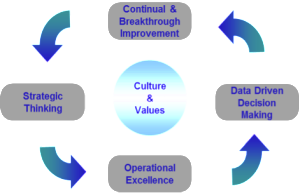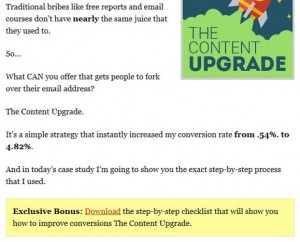Back in the day, aspiring digital marketers in the SEO game could get away with formulaic set moves that would all but guarantee a top spot. Nowadays it’s different – search engine optimization has evolved to such a degree that it very nearly emulates real world marketing; that is, marketing for the people.
And you know what? People are fickle.
But that’s the beauty of it. Modern SEO is so dynamic that almost anything could work, but that’s not to say that everything will.
Is it worth the risk?
Yes, it most certainly is. Of course, you could play it safe and stick with the tried and tested methods. Blogging, social media, link building, site optimization, etc. But in a field where standing out is how you will shoot to the top of the charts, doing the same thing that everyone else is doing will get you nowhere. The bare basics can get you off the ground, sure, but they’re just that – basics.
Investing a little more into your efforts can go a long way.
Check out these ten often overlooked SEO hacks you can apply:
1. Accelerated Mobile Pages (AMP)
Google and Twitter’s recent mobile project’s premise is deceptively simple: by whittling web code down to only display the bare essentials, site loading speed will decrease by a dramatic amount. It does this by streamlining HTML and CSS while also disabling JavaScript completely.

Now, a few seconds of waiting may not seem like a lot, but the effects are drastic. Listen to what others have to say about it:
- In the presentation “Make Data Useful” by Greg Linden, a past employee of online giant Amazon, they lose 1% of sale every 100ms it takes for their site to load.
- In their blog post, “Firefox and Page Load Speed,” Mozilla reported that removing 2.2 seconds off their landing page’s loading time resulted in an increase in conversion of 15.4%.
Add to the fact that according to a report from SimilarWeb’s State of Mobile Web, mobile devices account for 56% of traffic to top sites, and you have a winning combination. By speeding up the mobile user’s experience, you in turn, buff your site’s efficiency.
Should you want to learn more, an in depth-coverage and introductory tutorial can be found on its website: AMPProject.
2. Evergreen Content
Good content is great, but the timeless content is better. If you want some pointers on how to create some, then check out Stephanie’s detailed post here on Positionly about it.

It can be summarized using her infographic:
Other additional notes to remember when trying to create this type of content is to:
- Decide if it’s supposed to withstand time or itself. Content can be broken down into two types: timeless content, which remains relevant despite the passage of time; and sustainable content, which can be updated periodically.
- Keep it in mind. Place it somewhere accessible so people always see it.
- Let it grow. The best thing about evergreen content is that other people are bound to find it useful as well. That means links will come naturally.
- Use your audience. Building upon the previous point – share your post on various social media platforms, so you’re sure it reaches those who’re interested.
3. TF*IDF
TF-IDF stands for term frequency-inverse document frequency. Basically, it’s a statistical way to check on which keywords hold weight in a document or a corpus. The more times a certain word appears in a document, the more important it is deemed to be. On the other hand, the word is also balanced out by how many times it appears in the corpus.
This is a great – albeit work intensive – way to check on your content.
TF: Term Frequency
Sometimes also called keyword research. Calculating it isn’t too hard – if, for example, our keyword is “potatoes” and it shows up five times in a 500-word document, them the term frequency for it can be calculated as such:
5/500 = 1%
Inverse Document Frequency
This measures how important the TF term is. The formula for it is:
IDF = log(all documents/no. of documents with keywords)
Assuming that “potatoes” shows up 300 times in 1000 documents, then the IDF is:
Log(1000/300) = 0.5
One thing to remember about TF*IDF is that the more frequently a term shows up, the more it is deemed to be irrelevant. So, if you’re thinking about keyword stuffing… don’t.
4. Increase your Click Through Rate
It doesn’t matter how many times you show up on the first page if no one clicks on your site. That’s why maximizing your CTR is important! Not only does in indicate how relevant you are to the search query that brought you up, but it also tells the search engine if your CTR is properly at par with your rank.
It doesn’t end with the clicks, though. If your visitors end up backing out of your site too quickly too often, then that also signals that there’s something wrong.
There are many ways to check on why you could have a high bounce rate, but the nothing trumps the simplicity and efficiency of just asking. For this, you can use customizable online survey tools such as Qeryz, Insitez, or WebEngage.
5. Use the 2nd Largest Search Engine

Don’t underestimate the power of Youtube. Having your own channel to supplement your site’s content not only adds to what you can offer your visitors, but it also contributes to how people will perceive you overall.
Optimizing for Youtube is a cinch. Take the following factors into consideration and you’re good to go:
- Title. It’s similar to copywriting. Have a good, relevant one.
- Tags. Use this feature to your advantage. Tag, tag, tag – as long as it’s appropriate.
- Description. Describe your video quickly and add your keyword in if you can.
- Transcription. It makes sense to add subtitles – it smoothens the user experience a lot.
- Social shares. Take advantage of Youtube’s inherent connection with other sites.
6. Google+
While Facebook and Twitter remain amazing social platforms on their own, Google+ has an ace up its sleeve. Content that’s shared on Google+ can be seen by your network when they search on Google!
The best way to use this connection is to build a following on your Google+ page through sharing good content and engaging with other users. Just be careful not to overshare – much like any other social media platform, subscribers will leave if they notice that you’re just spamming them. Take care to curate your content and engage them just as you would on your regular site or elsewhere.
7. Broken Link Building
Coined by Melanie Nathan, the former SEO Executive of Seer Interactive, broken link building can be done by contacting a webmaster who has a broken resource on their site and offering to replace it with a working one.
Chances are, they’ll want it. 404s on a site are never a good sign – not for the people who stumble upon it and definitely not for the site when the search engine sees it. It’s a sign of neglect, which has the unfortunate effect of making a site lose credibility both in the digital and real space.
There are many ways to find broken links, but so far the best way is to simply use one of the many tools readily available to do so.
Once you find a broken link, the next step is to contact the site owner. Use tools like Emailhunter.co to find a webmaster’s contact info should it be unavailable.
Here’s a sample outreach e-mail for your reference:
Hello [Name],
As I was browsing your site for research, I found that [link] is not working.
I’ve previously written an article similar to that one; would you like to see if it can replace the broken one instead?
[Link to your resource]
Either way, thank you for your content.
Cheers!
After that, it’s all a matter of waiting.
8. Schema
This form of optimization is often neglected. That’s unfortunate because it can do a lot to boost rankings.
In basic terms, schema markup is code that translates your words into something that the search engine can understand. Loosely defined, it translates your content into code.
For example, take the phrase “D’ Fried Potatoes” and pretend that it’s a local business – with a website – that sells fried potatoes. It may make sense to us as a (fake) brand name, but the search engine doesn’t know that. So, in order for us to communicate its true nature to the search engine, we can categorize it using Schema:
9. Use Https://
Google has shown a preference for https sites over HTTP ones, just like any other person would.
“But why?” you may ask.
In order to see why https sites gets to have a minor boost, an understanding of their main difference is required.
HTTP (Hypertext Transfer Protocol) is a system of moving information around the internet in a “free” form; that is, as long as the information gets from point A to point B, it does not matter how it’s done. By default, it uses the Transmission Control Protocol (TCP) port 80.
HTTPS on the other hand – the secure version of HTTP – has to use SSL (Secure Sockets Layer) in order to communicate. It follows the same protocols as HTTP, but it encrypts the data, locking others out from cracking it open. It’s also worth noting that HTTPS uses TCP Port 443 by default, making it a wholly separate operation from HTTP.
10. Be Natural
This is one of the most basic, yet most forgotten ways to boost rankings. Sometimes it’s simply best to run your site as you would without having to worry about technicalities such as onsite optimizations, keywords, landing pages, backlinks, and the like.
Write on your blog as you would. Reach out to other influencers because you want to contribute to their site and not because you want their link juice. Design your site the way you think it best. As long as you do all the basics responsibly (titles, meta descriptions, headers, etc.) you’re still bound to attract others to your site. After all, SEO isn’t all about impressing the search engine.
Always remember that it’s about the people, too.
New to SEO? Learn more about Search Engine Optimization!
Digital & Social Articles on Business 2 Community
(83)








